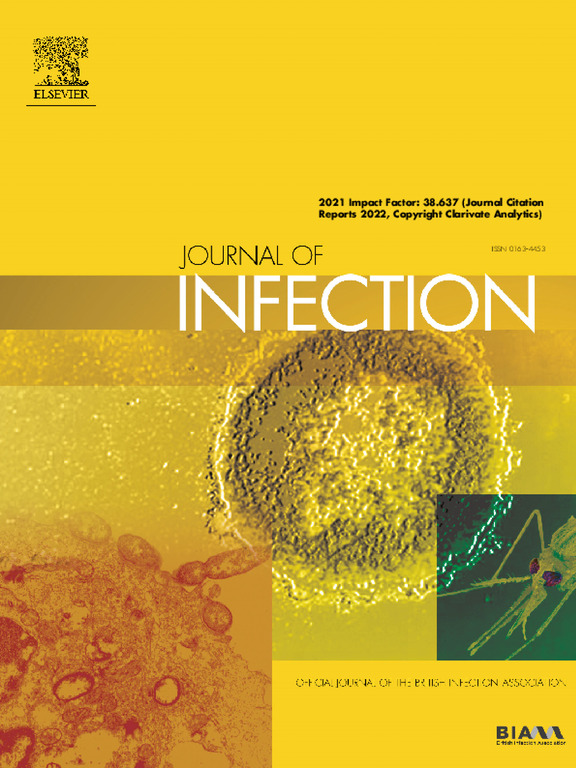Long-term physical capacity following COVID-19: A prospective, three-year study
IF 11.9
1区 医学
Q1 INFECTIOUS DISEASES
引用次数: 0
Abstract
Objectives
COVID-19 impacts physical and respiratory health, and the clinical presentation ranges from asymptomatic cases to severe infections requiring hospitalisation. While the long-term effects on lung function and physical capacity are well-documented in moderate to severe cases, the long-term outcome for individuals with mild COVID-19 remains poorly understood. This study investigates the long-term recovery of physical capacity and breathlessness among both hospitalised and non-hospitalised individuals.
Methods
This prospective cohort study enrolled individuals with confirmed SARS-CoV-2 infection between April 2020 and May 2021 through the CoVUm-study. Participants underwent assessments of lung function at 3–6 months after infection and attended follow-ups up to three years post-infection. Physical capacity was evaluated at follow-ups, using the one-minute sit-to-stand test and the modified Medical Research Council scale to assess breathlessness.
Results
The cohort included 291 participants, 35% of whom were hospitalised during SARS-CoV-2 infection. At the 3-year follow-up, 191 participants completed the physical capacity test and 179 had an assessment of breathlessness. Physical capacity improved significantly in the total cohort up to two years post-infection, where improvement plateaued. Hospitalisation and impaired diffusing capacity were significantly associated with reduced physical capacity (beta –6.4, p < 0.001; beta –8.9, p < 0.001, respectively) and breathlessness (beta 3.9, p < 0.001; beta 1.6, p = 0.012, respectively). While non-hospitalised participants demonstrated improvements in physical capacity for up to two years, improvement for hospitalised individuals plateaued by six months.
Conclusion
Hospitalisation and impaired diffusing capacity are strong independent predictors of reduced physical capacity and persistent breathlessness up to three years post-infection. Non-hospitalised individuals also experience long-term reductions in physical capacity, underscoring the need for targeted rehabilitation strategies.
COVID-19后的长期身体能力:一项为期三年的前瞻性研究
目的:COVID-19影响身体和呼吸系统健康,临床表现从无症状病例到需要住院治疗的严重感染不等。虽然中度至重度病例对肺功能和体能的长期影响已有充分记录,但对轻度COVID-19患者的长期后果仍知之甚少。本研究调查住院和非住院个体的体能和呼吸困难的长期恢复情况。方法:本前瞻性队列研究通过covum研究招募了2020年4月至2021年5月期间确诊的SARS-CoV-2感染的个体。参与者在感染后3-6个月接受肺功能评估,并在感染后随访3年。在随访中评估身体能力,使用一分钟坐立测试和修改后的医学研究委员会量表来评估呼吸困难。结果:该队列包括291名参与者,其中35%在SARS-CoV-2感染期间住院。在3年的随访中,191名参与者完成了体能测试,179名参与者进行了呼吸困难评估。在整个队列中,身体能力在感染后两年内显著改善,改善趋于稳定。住院治疗和弥散能力受损与身体能力下降(β -6.4, p < 0.001; β -8.9, p < 0.001)和呼吸困难(β 3.9, p < 0.001; β 1.6, p = 0.012)显著相关。虽然未住院的参与者在长达两年的时间里表现出身体能力的改善,但住院个体的改善在六个月后停滞不前。结论:住院治疗和弥散能力受损是感染后3年内身体能力下降和持续呼吸困难的独立预测因素。未住院的个人也会经历身体能力的长期下降,这突出了有针对性的康复战略的必要性。
本文章由计算机程序翻译,如有差异,请以英文原文为准。
求助全文
约1分钟内获得全文
求助全文
来源期刊

Journal of Infection
医学-传染病学
CiteScore
45.90
自引率
3.20%
发文量
475
审稿时长
16 days
期刊介绍:
The Journal of Infection publishes original papers on all aspects of infection - clinical, microbiological and epidemiological. The Journal seeks to bring together knowledge from all specialties involved in infection research and clinical practice, and present the best work in the ever-changing field of infection.
Each issue brings you Editorials that describe current or controversial topics of interest, high quality Reviews to keep you in touch with the latest developments in specific fields of interest, an Epidemiology section reporting studies in the hospital and the general community, and a lively correspondence section.
 求助内容:
求助内容: 应助结果提醒方式:
应助结果提醒方式:


